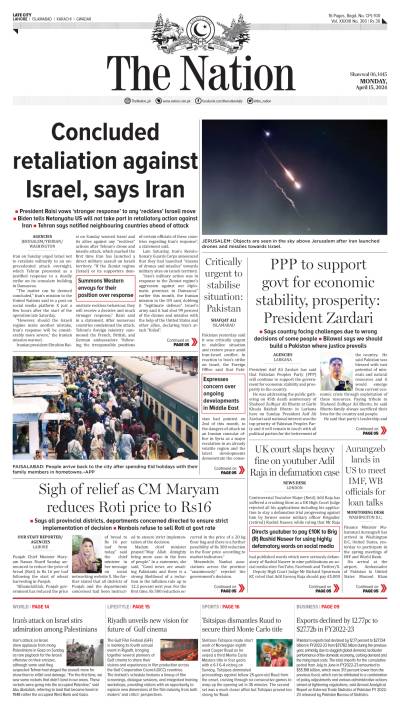QUETTA – About 34.1 percent children aging between 6 and 16 years are not going to schools while 77.7 percent children of pre-primary age are not attending any form of education in Balochistan.This was revealed by Pakistan’s largest-ever citizen-led household based Annual Status of Education Report (ASER) Survey 2012 here the other day. The survey pointed out that the school-going age children’s learning ability in terms of reading Urdu or regional languages, English or doing basic level of arithmetic is alarmingly poor across the country. “Almost 92.2 percent of Class-III students are not able even to read Class-II level story in Urdu or regional languages like Sindhi and Pashto, while almost 78 percent students cannot read Class-II level sentences,” states the survey report.The ASER survey 2012 has assessed learning outcomes of 5-16 years age children, prevalence of early childhood education, volume of out-of school children, mother’s education, role of private schools, private tuitions incidence, medium of instruction, students and teachers’ absenteeism, computer labs and libraries, missing facilities and government grants.The ASER’s specifically trained team of volunteers that surveyed 16, 303 households in 825 villages located in 28 rural districts of Balochistan and detailed information of 56,375 children aged 3-16 years was collected (59 percent male and 41percent female).The report said 34.1 percent of 6-16 age group children were out of schools in Balochistan while percentage of girls is higher than boys, as 21 percent girls are out of schools and 13 percent boys. “The number of children drastically comes down, as only 3 out of 8 children reach Class-X from Class-1.”The learning levels of 5-16 years age children were assessed through specifically designed language and mathematics tests, which covered language to Class-II level text and arithmetic covering up to Class-III level national textbooks. The results showed that nearly 84.5 percent children of grade 3 could not read even a sentence in Urdu or their own language. “About 64 percent of Class-V students were unable to read Class-II level story text, while around 63.7 percent children could not read sentences of same level,” shows Class-wise analysis of reading ability.The English reading and comprehension test reported that 68.1 per cent of Class- V students, 49.5 per cent Class-VI and 40.9 per cent Class-VII students could not read Class-II level English sentences- raising serious questions about students’ learning outcomes.The mathematics assessment test covering up to Class-III standard national curriculum, asked from Class-IV students, revealed that 33.3 percent students were able to do two-digit subtraction sums and only 16.1 percent children could solve three digit division sums.The ASER survey reported that 34 percent of boys and 19 percent of girls were able to read at least Urdu/Sindhi/Pashto sentences. Similarly, 35 percent boys and 20 percent girls were able to correctly read English language words and sentences; while 38 percent f boys and 18 percent of girls were able to do subtraction or division problems.“19 different languages are being used across Balochistan including three commonly used languages Balochi (44 percent), Pashto (34 percent) and Brahvi (6 percent) as medium of instruction,” the report said adding that though Urdu was used in four percent of the surveyed households, still 69 percent of all households preferred Urdu as the medium of instruction schools, while 3 percent preferred English.Referring to private tuition revealed that 16 percent of all private school-going children were taking paid tuition as compared to only 1 percent of students studying in government schools. The data analysis also showed that 19 percent private school students were taking tuition at Class-I level, whereas 10 percent at Class-X.The survey has found that 66 percent of the public and 17 percent private schools were imparting multi-grade teaching as Class-II was sitting with other classes. Similarly, at Class-VIII level, 30 percent government and as high as 9 percent private schools were offering multi-grade teaching. “As many as 58.3 percent of private high schools have functional computer labs whereas 9.6 percent government schools have the same facility. While, 41.6 percent private high schools and 12.9 percent government high schools have library books available for students,” says ASER survey report. It said 56 percent private schools and 14 percent government schools have no potable water facility. Similarly, 78 percent public and 19 percent private primary schools have not provided toilet facility to their students. It said that government schools across Balochistan have more qualified teachers than in private schools.
Tuesday, April 16, 2024
77pc children don’t go to school in Balochistan
CM Maryam seeks comprehensive development plan for Murree
April 16, 2024
Court remands XEN in FIA custody
April 16, 2024
PML-N believes in ensuring prosperity, says Azma Bukhari
April 16, 2024
PA session called on Opposition’s requisition
April 16, 2024
Policing Reforms
April 15, 2024
Storm Safety
April 15, 2024
Deterrence Restored
April 15, 2024
IMF Challenges
April 14, 2024
Security Crisis
April 14, 2024
Suicide awareness
April 15, 2024
Biden’s dilemma
April 15, 2024
Over dependence on technology
April 14, 2024
Education reform call
April 14, 2024
Brain drain
April 14, 2024
ePaper - Nawaiwaqt
Advertisement
Nawaiwaqt Group | Copyright © 2024





